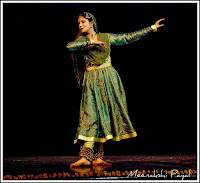I think reading three books was probably a bit excessive and I've resolved to limit myself to two books per place in future. The cooking, music, movies and general reading don't take me a long time, so getting bogged down in books really slows me down somewhat. Despite reading three books, watching two movies, cooking a meal, learning about Bhajans and raising my Hindu consciousness, I still feel like I've only scratched the surface of my learning experience and, as usual, there is so much more . . .
During my virtual journey through Rajasthan, I've learned that Rajasthan is just slightly smaller than Germany and that 65% of its land mass is taken up by the Thar desert, the most densely populated desert in the world! I learned that Ajmer is a mainly Muslim city, which is also the location of the prestigious Mayo College, founded by the British in the 1860's to educate Rajputana's elite. I learned that 70% of Rajasthan's population works in agricultural, but also that tourism is a major industry and has been made a compulsory subject in Rajasthani schools.
I learned about the classical dance, Kathak, two forms of which originate in Jaipur. I learned that Rajasthan is reknowned for its miniature paintings. I learned about the bhuuts or dakins, which are ghosts that inhabit crossroads and this reminded me of a similar tradition in England of burying people who committed suicide at the crossroads. I learned that most barbers in Rajasthan close on a Tuesday, as it's considered to be bad luck to have your hair cut on this day. I learned about the traditional form of enamel work called Meenakari. I learned about Jantar Mantar, Jaipur's famous observatory, built by its founder, Jai Singh. I learned about yantras (sundials) and gnomons. About the gates of Jaipur and Amber's resident poet Bihari.
I learned about the Kalyanamastu ceremonies, or group weddings, often the only option for impoverished young men and women. I learned about the Jats and Siberian cranes. I learned about the Pushkar camel festival and how puppeteers travel around the state, educating the masses on social issues, health and human rights. I learned that Pushkar is the only official place where Brahma can be worshipped. I learned about the kingdom of Matsya, of Mewar and Udaipur and of Marwar, the land of the dead.
 I learned about hathphools and turbans. About the remote province of Jhalawar and the 'Scotland of Rajasthan', Shekhawati, with its proud people and painted havelis. I learned the story of Mumal and Mahendra, about Padmini, the Queen of Chittor and Amritdevi, heroine of the Bishnoi people, who had her head cut off, rather than let their beloved trees be felled. I learned about Bassi, with it's famous wood-carvers, Pokaran with its nuclear testing and the Afghan town of Tonk.
I learned about hathphools and turbans. About the remote province of Jhalawar and the 'Scotland of Rajasthan', Shekhawati, with its proud people and painted havelis. I learned the story of Mumal and Mahendra, about Padmini, the Queen of Chittor and Amritdevi, heroine of the Bishnoi people, who had her head cut off, rather than let their beloved trees be felled. I learned about Bassi, with it's famous wood-carvers, Pokaran with its nuclear testing and the Afghan town of Tonk. I learned about the Demoiselle Cranes of Khichan and why Jaisalmer has been nicknamed 'the Golden City'. I learned about the Karni Mata temple in Deshnok, near Bikaner and how they have an annual festival or worshipping rats, which are believed to be re-incarnations of local people. I learned all of this and so much more.
धन्यवाद राजस्थान - thank you Rajasthan! I hope to visit your wonderful cities sometime soon.
Image credits:
The image of the Pichola lake in Udaipur was taken by flickruser bit ramone/off a.k.a. Jose Luis Hitos, who is from Granada in Spain (another amazing city!).
The image of the Kathak dancer is by flickruser Meenakshi Payal.
Thanks Jose and Meenakshi for sharing your images with us using the Creative Commons license.


No comments:
Post a Comment